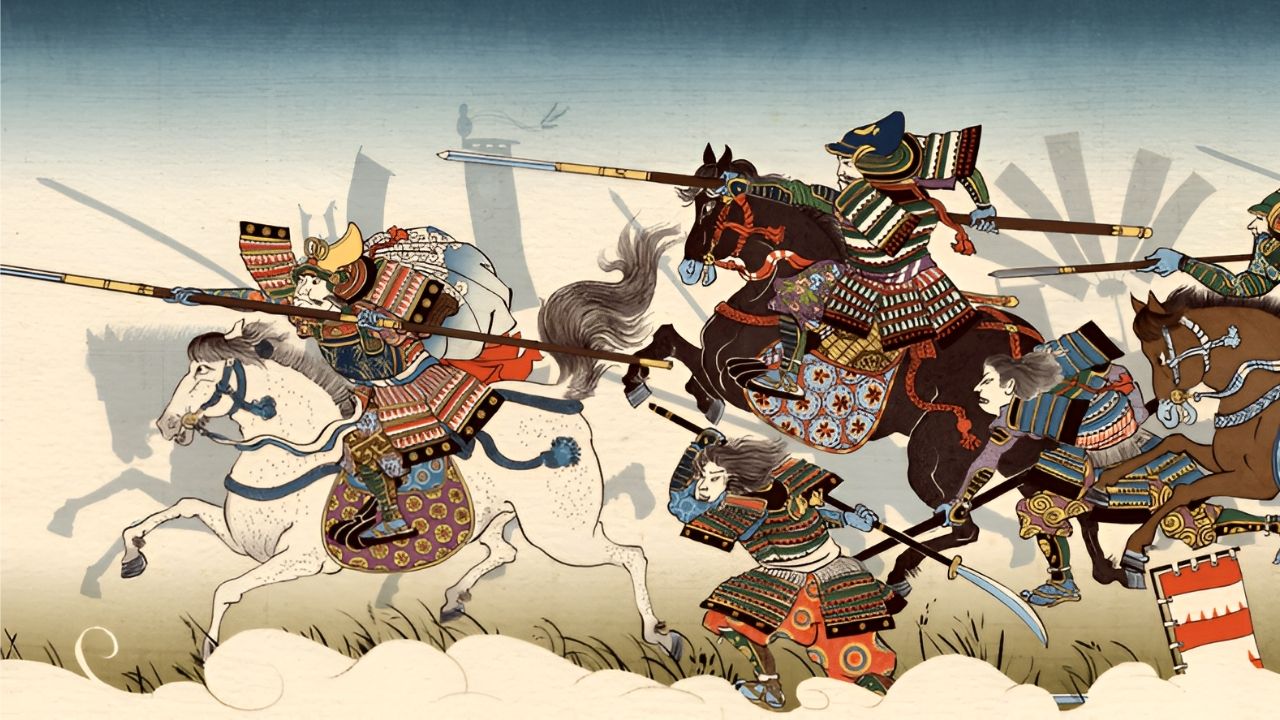
What was the Jinshin War? The Jinshin War was a fierce power struggle in ancient Japan, occurring in 672 AD. This conflict erupted between Prince Ōama and his nephew, Prince Ōtomo, following the death of Emperor Tenji. The war's name comes from the Chinese zodiac year of Jinshin, which corresponds to 672. This battle wasn't just about who would sit on the throne; it shaped the future of Japan's imperial rule. Prince Ōama emerged victorious, later becoming Emperor Tenmu. His reign brought significant reforms, including the establishment of a more centralized government. The Jinshin War is a pivotal moment in Japanese history, illustrating the intense rivalries and political maneuvers of the time.
Key Takeaways:
- The Jinshin War was a short but impactful power struggle in Japanese history, shaping the country's future and marking the end of the Asuka period.
- The conflict between Prince Ōama and Prince Ōtomo led to Emperor Tenmu's rise to power, centralizing authority and influencing Japanese culture for years to come.
The Jinshin War: An Overview
The Jinshin War was a significant conflict in Japanese history, occurring in 672 AD. It was a power struggle between two brothers, each vying for control of the throne. This war shaped the future of Japan in many ways. Here are some fascinating facts about this historical event.
- The Jinshin War took place during the Asuka period, a time of great cultural and political change in Japan.
- The conflict was primarily between Prince Ōama and his nephew, Prince Ōtomo.
- Prince Ōama later became Emperor Tenmu after his victory in the war.
- The war lasted only a few months, from June to August 672 AD.
- The name "Jinshin" comes from the Chinese zodiac calendar, where 672 AD was the year of the Jinshin.
Key Figures in the Jinshin War
Understanding the main players in the Jinshin War helps to grasp the motivations and outcomes of the conflict.
- Prince Ōama, the younger brother of Emperor Tenji, was a key figure in the war.
- Prince Ōtomo, the son of Emperor Tenji, was the main rival of Prince Ōama.
- Emperor Tenji, who died in 671 AD, left the throne to his son, sparking the conflict.
- Fujiwara no Kamatari, a powerful court official, initially supported Prince Ōtomo.
- Many local governors and military leaders played crucial roles in the war, often switching sides.
The Course of the War
The Jinshin War was marked by several key battles and strategic moves.
- The first major battle took place at the Seta Bridge, where Prince Ōama's forces won a decisive victory.
- Prince Ōama's army used guerrilla tactics, taking advantage of their knowledge of the local terrain.
- The Battle of Yamazaki was another significant conflict, resulting in a victory for Prince Ōama.
- Prince Ōtomo's forces were initially larger but less organized, leading to their eventual defeat.
- The war ended with the capture and suicide of Prince Ōtomo.
Aftermath and Impact
The consequences of the Jinshin War were far-reaching, affecting the political landscape of Japan for years to come.
- Prince Ōama ascended the throne as Emperor Tenmu, initiating several reforms.
- Emperor Tenmu centralized power, reducing the influence of local governors.
- The war led to the construction of new fortifications and roads to improve military logistics.
- Emperor Tenmu's reign saw the compilation of the Kojiki, Japan's oldest chronicle.
- The Jinshin War is often seen as a turning point in Japanese history, marking the end of the Asuka period.
Cultural and Historical Significance
The Jinshin War left a lasting legacy in Japanese culture and history.
- The war is mentioned in several historical texts, including the Nihon Shoki and the Kojiki.
- Many legends and stories about the war have been passed down through generations.
- The Jinshin War is sometimes depicted in Japanese art and literature.
- The conflict highlighted the importance of loyalty and strategy in Japanese warfare.
- The Jinshin War set the stage for future conflicts and power struggles in Japan's history.
Final Thoughts on the Jinshin War
The Jinshin War remains a pivotal event in Japanese history. Its impact on the political landscape and cultural development of Japan can't be overstated. The conflict between Prince Ōama and Prince Ōtomo reshaped the nation's future, leading to significant changes in governance and societal structure. Understanding these historical events helps us appreciate the complexities and nuances of Japan's rich past. The war's legacy continues to influence modern Japan, reminding us of the importance of leadership, strategy, and resilience. By exploring the Jinshin War, we gain valuable insights into the struggles and triumphs that have shaped Japan into the country it is today. This fascinating period offers lessons that remain relevant, highlighting the enduring nature of human conflict and resolution.
Frequently Asked Questions
Was this page helpful?
Our commitment to delivering trustworthy and engaging content is at the heart of what we do. Each fact on our site is contributed by real users like you, bringing a wealth of diverse insights and information. To ensure the highest standards of accuracy and reliability, our dedicated editors meticulously review each submission. This process guarantees that the facts we share are not only fascinating but also credible. Trust in our commitment to quality and authenticity as you explore and learn with us.
